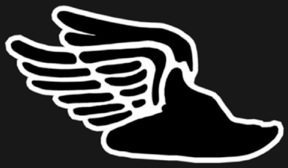Running nowadays has evolved from one of the cheapest sport to an expensive one. Technology has changed the way people run. Advanced features not only come from shoes but from apparel and other gear as well.
Many prefer to run with computers. Wrist top computer brands like Suunto, Polar, Garmin and Timex provide runners data during the run. Some have footpods to measure distance, speed or cadence. Many utilize GPS technology to provide distance, speed and geographical location data. All computers have Heart rate monitors. Used to determinine our heart rate during specific levels of activity, the heart rate monitor is one of several measures to determine overall fitness.
Do you know how to use your Heart rate monitor (HRM)?
HRM training uses training zones to determine your level of exertion during an activity. Zone 1 and 2 are used for cardio, aerobic or weight loss program. Zone 3 and 4 are used during an anaerobic program while Zone 5 is used when sprinting or all-out effort.
Before using your heart rate monitor, first determine your Resting Heart rate (RHR), Maximum Heart rate (MHR) and your training zones.
1. MHR is determined by subtracting your current age with 220. (220 - Age)
2. RHR is determined by taking your heart rate after waking up in the morning before doing any activity for 3 consecutive days. The average of the 3 results is your RHR.
3. Training Zones are determined by the following:
Zone 1: [(MHR-RHR) x (60-70%)] + RHR
Zone 2: [(MHR-RHR) x (71-75%)] + RHR
Zone 3: [(MHR-RHR) x (76-80%)] + RHR
Zone 4: [(MHR-RHR) x (81-90%)] + RHR
Zone 5: [(MHR-RHR) x (91-100%)] + RHR
SAMPLE:
Reel Runner
RHR: 43 bpm
MHR: 189 bpm
Zone 1: 131 – 145 bpm
Zone 2: 146 – 153 bpm
Zone 3: 154 – 160 bpm
Zone 4: 161 – 174 bpm
Zone 5: 175 – 189 bpm
When do I use my Heart Rate Monitor?
Although they are not 100% reliable, HRM should be used during training and may be used during a race. Factors like stress, dehydration, lack of sleep and caffeine intake can cause subtle changes to your heart rate and training zones. It is best to combine HRM training with a Rate of Perceived Exertion (RPE) or Borg Scale to improve reliabilty. These two combined can determine an athletes’ capabilities and limits during training and in a race.
RPE Scale
0 – Complete Rest
1 – Very Weak
2 – Weak
3 – Moderate
4 – Somewhat Strong
5 – Strong
6 –
7 – Very Strong
8 –
9 – Extremely Strong
10 – Exhaustion
Am I ready to use my heart rate monitor and follow my training zones?
Training for a race means following a specific and individual program. Running a full or half marathon, finishing an Ironman or Xterra race and competing in a cycling race needs patience, determination and persistence. Without a program, your training could lead to overtraining or, worse, injuries. A training program would consist of easy days, interval or tempo or hard days and time trials. Your training zones will tell you how much effort to exert during any of these days. Easy days means training at Zone 1 or 2 for an hour or more while Intervals or tempo training will be in the Zone 3 or 4 range. Sprints or “All out” efforts are usually in Zone 5 with durations of only a few seconds to a minute or two. During a 42K or 21K race, your HRM zones will help you follow a negative split strategy by running the first half at Zone 2 and completing the 2nd half with bouts of Zone 3 or 4 effort. Incorporating HRM readings to your training will help you follow your program and get to the finish line stronger and faster.
See you on the road.






















hello sir! Good day! Very informative blog.
ReplyDeleteWhat hrm watch can u recomnd for beginers? Budget wise.. Probly les than 10k. Tnxtnx
Good to know about RPE....thanks!
ReplyDeletevery informative blog. thanks
ReplyDeleteI LIke!
ReplyDelete